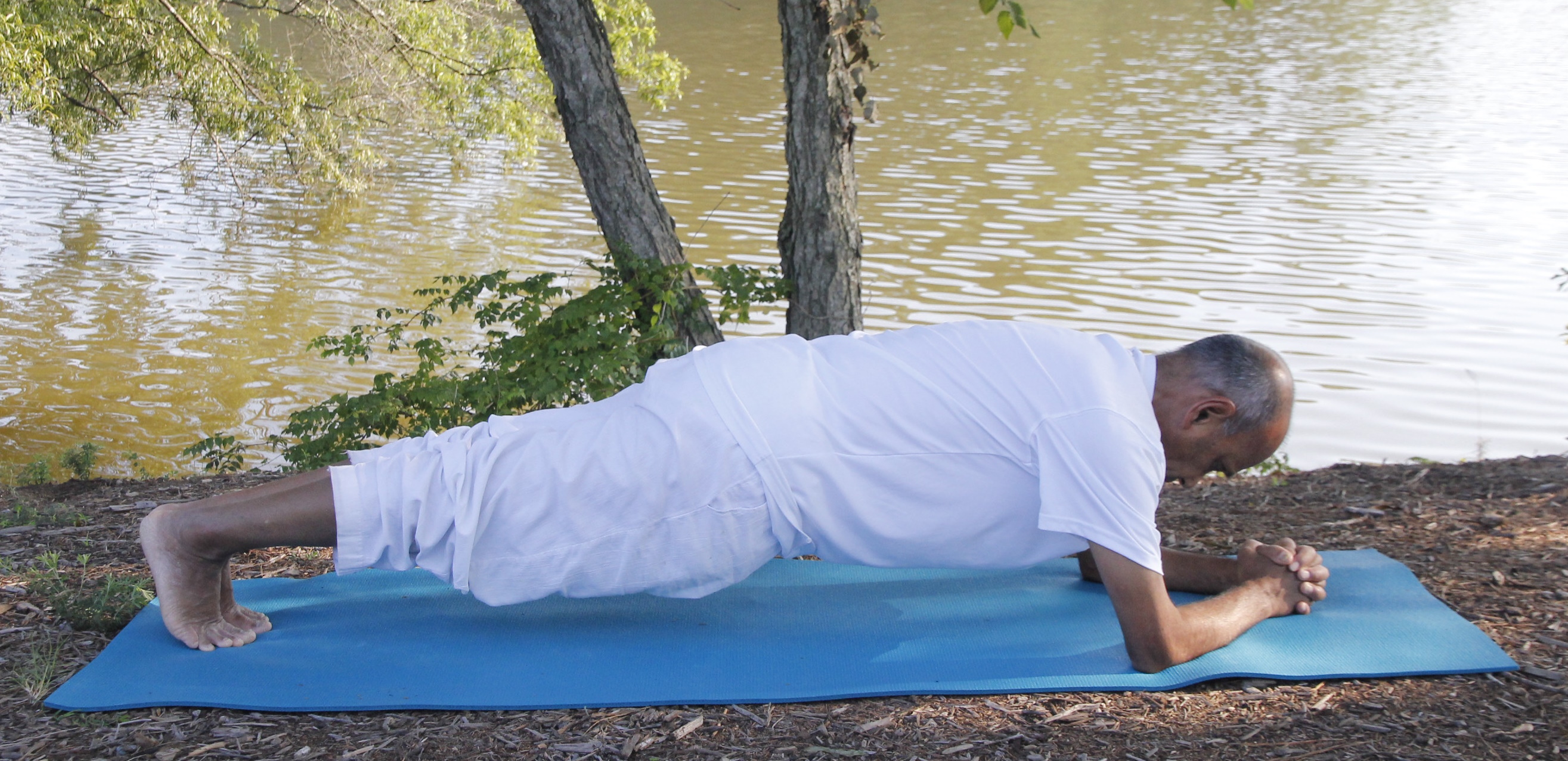
Forearm Plank
Core and back muscles, lower back in particular, are perhaps two of the most important sets of muscles in yoga practice. These muscles get used during majority of the yoga asana and pranayama practices. Strength and stability of these muscles can help you perform most of the yoga practices effectively and safely. On the other hand, a strong and regular yoga practice can help develop these muscles effectively.
For this post, I have chosen four simple poses that will help develop a strong core and stabilize the back muscles. You can view a video of these poses here.
Step-by-step
Plank on forearms
- Begin by resting on your mat on the abdomen. You can keep the arms either alongside the body or fold the elbows under your chin, cheek, or forehead. Stay in this relaxing position for about three breaths.
- Lift the head up and come up with the elbows positioned directly under the shoulders. You can keep the forearms straight out in front, parallel to each other, or you can join the palms and interlock the fingers.
- Curl the toes under and slowly lift the knees and buttocks off the floor, brining the body completely parallel to the floor.
- Make a mental effort to push the heels back and roll the shoulders forward. In this effort you may not produce any effective movement of the body but the effort will enhance the quality of stretch.
- Stay in the final pose for a duration that seems comfortable. With practice, over a period of time, you may be able to increase the duration for which you can hold this pose.
- When you want to come out of the pose, release the knees and the abdomen down and once again relax for a few breaths.
Upward facing/downward facing dog (urdhva-mukha/adho-mukha shvanasana) on the forearms
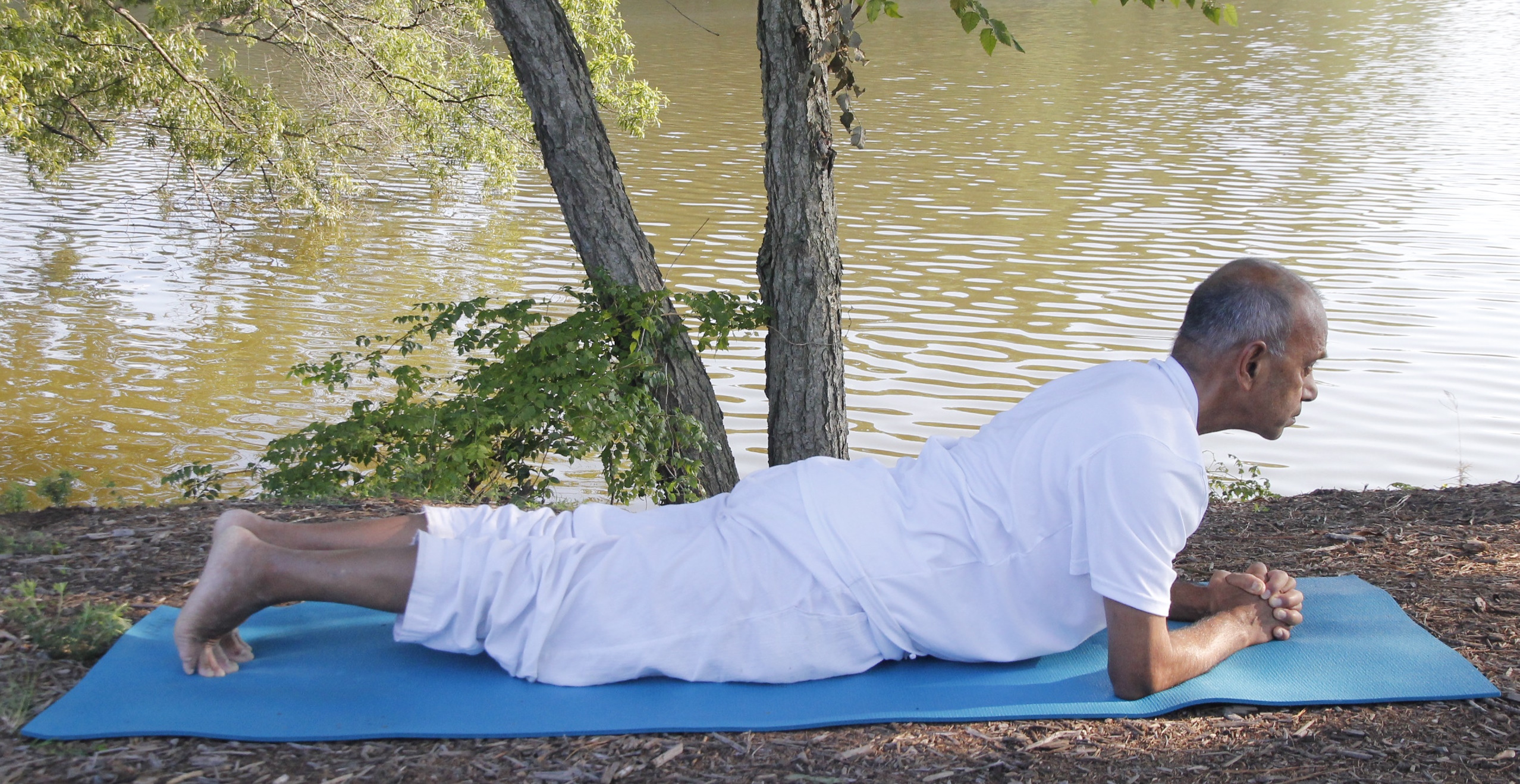
Forearm Upward Facing Dog
- Lift the head up and come up with the elbows positioned directly under the shoulders. You can keep the forearms straight out in front, parallel to each other, or you can join the palms and interlock the fingers.
- Curl the toes under and slowly lift the knees and buttocks off the floor, brining the body completely parallel to the floor.
- Make a mental effort to push the heels back and roll the shoulders forward. In this effort you may not produce any effective movement of the body but the effort will enhance the quality of stretch.
- With the next inhalation, begin to roll the shoulders forward and bring them as far out in front as comfortable; at the same time, lower the buttocks and the knees, without touching the floor, and also lift the head and chest upward.
- With the exhalation, start rolling the shoulders all the way back, lower the forehead and lift the buttocks and heels up as high as they go comfortably.
- Continue the above moves with each inhalation and exhalation a few more times, if comfortable.
- Finally bring the body back to the starting position – the plank on the forearms and pause there for a breath or two.
- When you want to come out of the pose, release the knees and the abdomen down, roll your buttocks all the way back and close to the heels. Let the forehead down close to the floor, arms relaxed alongside the body and again relax in this child pose (balasana) for a few breaths.
- Slowly sit back up on the heels in Vajrasana and then stretch the legs straight out and relax for a few breaths.
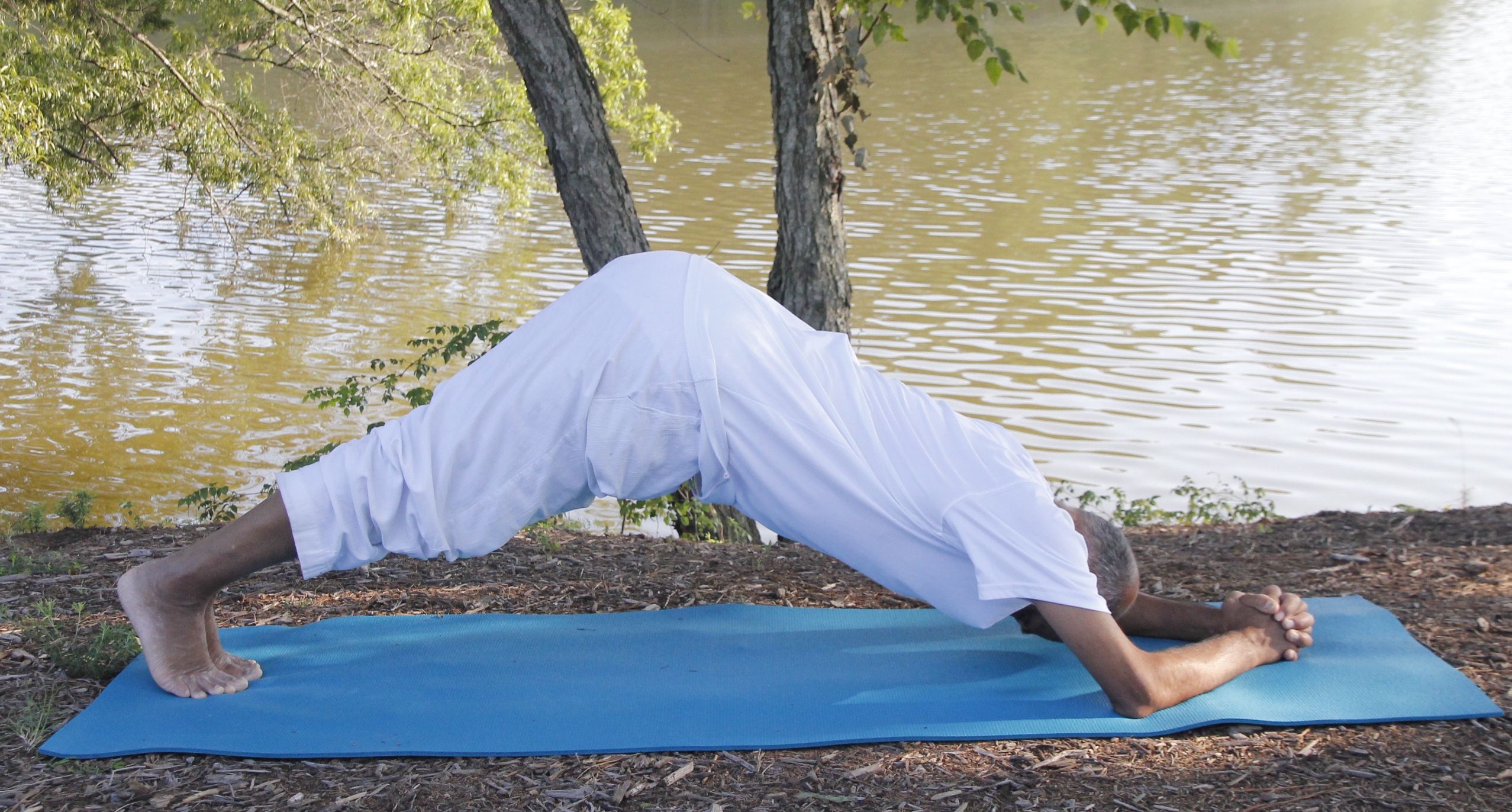
Forearm Downward Facing Dog
Supported boat pose
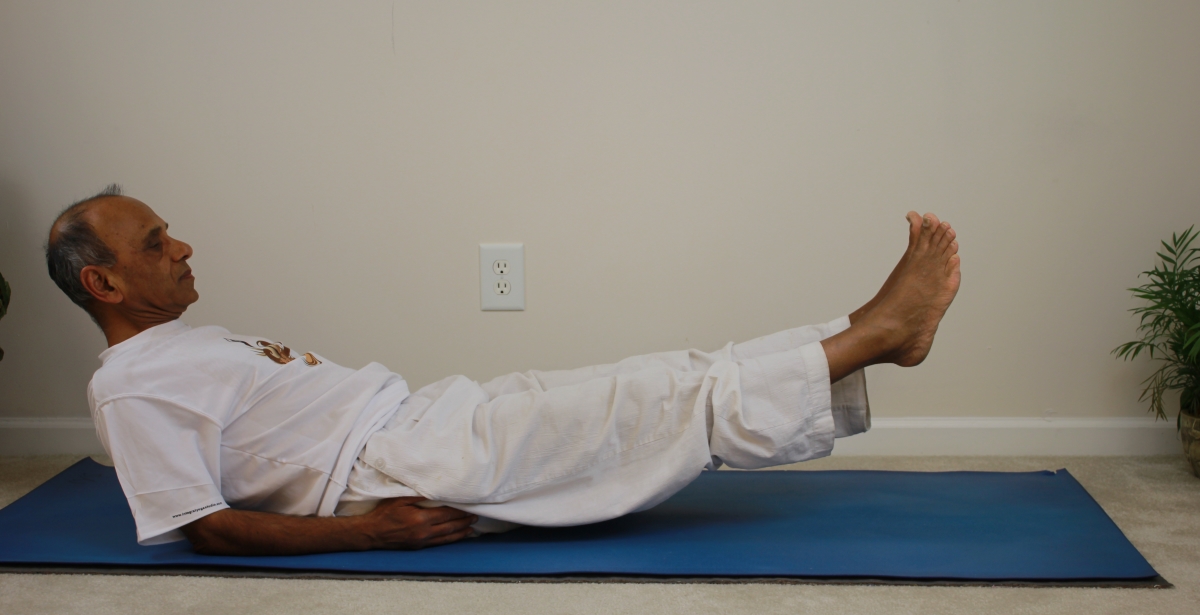
Forearm Boat
- Next we will practice what we call a supported boat pose (naukasana) as we will be supporting the body on the elbows.
- Come into a half-seated position on the elbows. Keep the legs stretched out straight ahead on the floor.
- Slowly lift the legs off the floor, bringing the feet the same height above the ground as the head. Try to keep the legs straight.
- This is the supported boat pose. Try to maintain the position for a duration that is comfortable.
- To come out of the pose, release the legs down and finally the back and head down and rest in Shavasana for a few breaths.
- To release any tension or tightness that you might have picked up in the boat pose, very gently roll the head side to side a few times. Finally, rest for a few breaths.
Reclining leg lifts
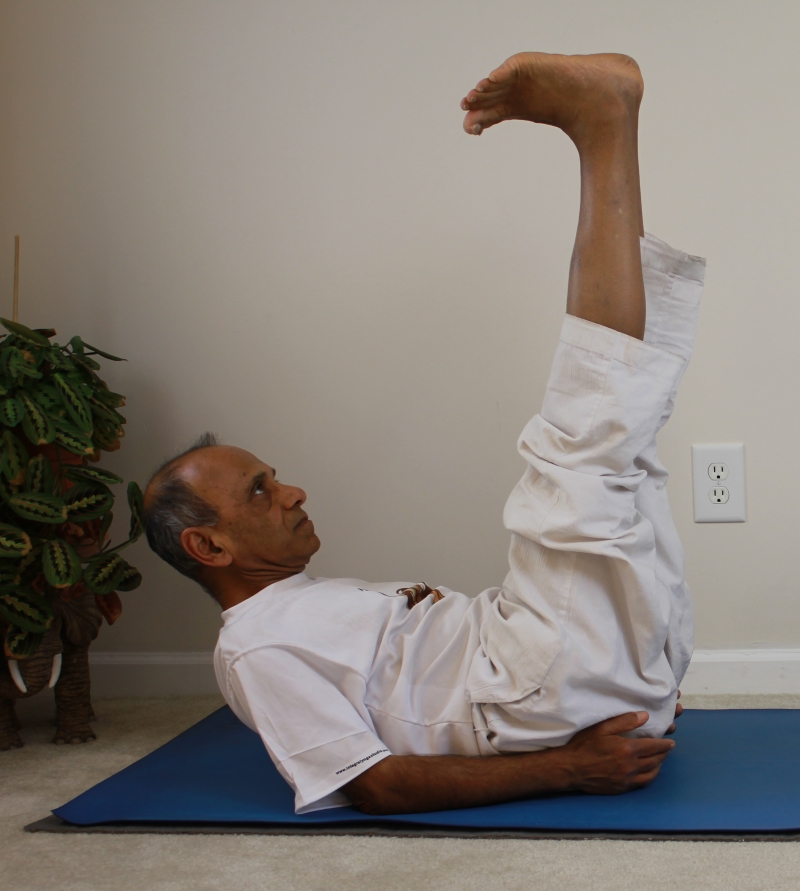
Reclining leg lift (both legs)
- Come into a half-seated position on the elbows. Keep the legs stretched out straight ahead on the floor.
- For these stretches, we have two options for the position of the feet in the neutral position. You can either keep the feet on the floor or about 2-3 inches above the floor.
- With the next inhalation, slowly raise the right leg up and try to bring it up to a fully vertical position. While raising the leg up, try to pull the toes down toward you and push the heel away from you.
- With the next exhalation, gradually begin to lower to the leg to the ground.
- Repeat these two moves a couple of more times, if comfortable. In both the movements the intention is to keep the legs straight. However, if it begins to feel uncomfortable, feel free to bend the knees slightly.
- After alternating these movements, lifting one leg at a time, release the legs to the ground and rest for a couple of breaths.
- Now with the next inhalation, try to lift both the legs up together, keeping the legs straight, and bring the legs up to a vertical position, if comfortable.
- When you exhale the next time, slowly release the legs back on the floor.
- Repeat these two moves a couple of more times. As before, try to keep the legs straight, bending them only if necessary.
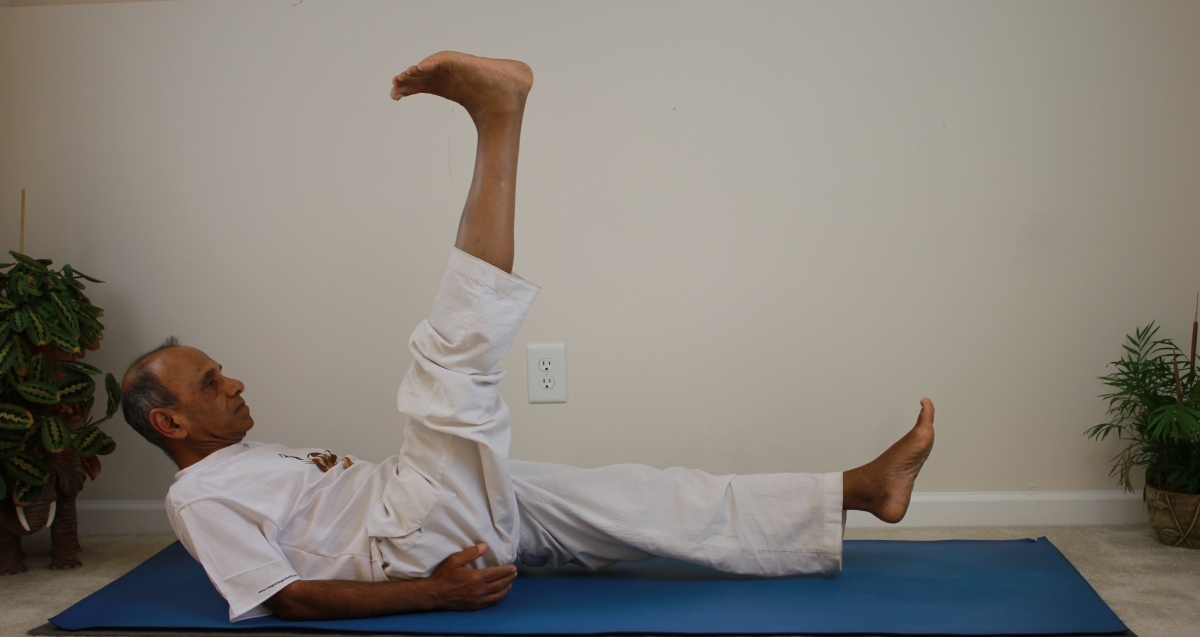
Reclining leg lift (one leg)
Benefits of a strong core
- Slimmer waistline – good overall health, preventing diseases like diabetes, improving digestion
- Improved sports performance – most sports require a strong core
- Improved asana practice – as we know many of the yoga asanas can be done more easily with a strong core. For example, a strong core can be very helpful in getting into and out of the shoulder stand (Sarvangasana) more comfortably.
- Improved posture – with a strong core, you are able to keep the spine tall and upright and still relaxed
- Prevents lower back pain – core and lower back work together
- Better breathing
- Better balance and stability
Recent Comments